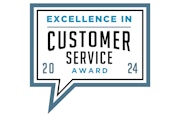How Smart Video Fuels Smart Business
Learn how video solutions with intelligent analysis capabilities can help benefit your drivers and enhance safety programs.
Read more
As any business owner knows, implementing changes in the workplace–big or small–can be met with a certain amount of resistance from employees. This behavior isn’t always unwarranted: even minor procedural changes or technology updates can have a big impact on any company and its workers. This holds true when making the decision to implement a fleet management solution. Stakeholders at all levels must be properly prepared for the change—from the buying stage, to adoption and throughout implementation.
The key to a successful transition lies in communication and execution. Oftentimes, a step-by-step process for communicating technology changes can help you get your employees on board and make the implementation process easier. Below are six steps to help you seamlessly introduce a new fleet management solution into your organization.
Deploying a new technology solution within your organization represents a major organizational change, and fleet managers and drivers alike will likely have concerns regarding its adoption. Clear and open communication is key to put them more at ease. Take extra time to focus on your employees to reassure them while explaining the benefits that both they and the overall business will experience from the new investment. Use this report to convey the benefits of fleet tracking technology.
Keep in mind that many employees come from an era where all the work was being done without a fleet management system. Before you select any solution, it’s crucial that you bring all your business’ stakeholders together, and confirm everyone agrees on the budget, objectives and approach. By getting your business leaders in the same room at the start of the selection process, you’re less likely to experience conflict down the road.
Once you have sought buy-in from stakeholders, it’s crucial to think carefully about your needs and document them in detail. It may be useful to engage a third party to help you evaluate your needs and match the right solution with those unique requirements.
In the case of fleet management software, explain how it is a necessary change and why it’s being implemented (for example, to help improve productivity and employee safety). Some employees may be on board right away, but you’ll need to sell it to at least a few.
This Fleet Tracking Trends Report can help you explain the business case with facts and figures from the industry. Help everyone see how fleet tracking technology will put the business ahead of the competition. It may be useful to point out why the old way of doing things was improper or ineffective.
Small workplace changes that are self-explanatory might only require an email, whereas a major change—like a large technology implementation—may merit a company- or department-wide meeting.
Simply sending a brief email to let everyone know about a big change can upset employees and create confusion. Any major change will create questions, and it’s better to answer those in person as a group. An initial walk through of the technology can also help ease initial anxiety and answer any specific questions.
Keep in mind that adopting new technology can also be challenging for each role in your company for various reasons. Be prepared for questions such as: How does GPS technology impact my role? How do I learn to manage this new telematics device?
You can mitigate these fears by anticipating your staff’s questions, doubts and fears and addressing them before they come up. For example, proactively educate employees on the many benefits of fleet management software, such as making it easier for drivers to stay compliant or ensuring dispatchers have the most accurate ETA information.
There's no definitive rule on the right timing for a big announcement, as every situation and workplace are different, but be aware of how the changes may affect your employees. Any big changes should be announced a few weeks in advance to give employees time to prepare.
If you’re implementing multiple workplace changes at once, roll these out gradually, and give your employees a timeline for when to expect each change to go into effect. It can be easier to deal with things one at a time than in a big chunk—and a gradual transition will be less likely to disrupt workflow and productivity.
A certain level of customization is required from any GPS fleet tracking solution. To determine if the solution you are selecting is right for you, it’s important to think about and document any unusual or specific features that your business will require. More importantly, involve representatives from each department to help with these customizations. They will feel part of the decision-making process and take a natural ownership of its success.
Lay out the specifics and steps related to the change. Identify the expected impact of the change as well as any action items—for example, additional training or certifications. Be meticulous in your planning of how the business will operate and what (if any) changes will arise in your employees' individual roles. Transparency and clarity are key.
Implementing a fleet management system in your organization is the need of the hour. However, its success depends on the people who use it every day. Follow the above steps to reduce disruption and put your business on the fast track to ROI.




Find out how our platform gives you the visibility you need to get more done.
Learn how video solutions with intelligent analysis capabilities can help benefit your drivers and enhance safety programs.
Read moreAre you ready for vehicle tracking? Go through our checklist to learn the signs you’re ready to add fleet tracking to...
Read moreTechnology adoption helps fleets navigate operational obstacles. Learn what fleet management industry technology trends...
Read moreLearn how telematics can lead to operational improvements.
Read more
Get your free 2024 Fleet Technology Trends Report and see how organizations are: